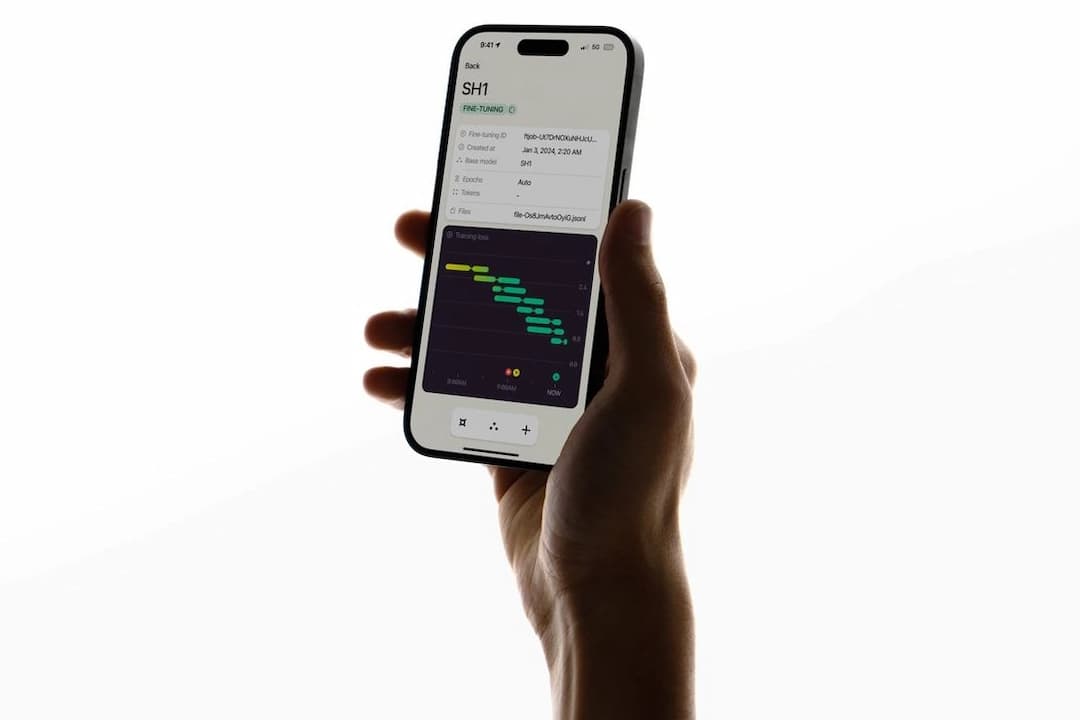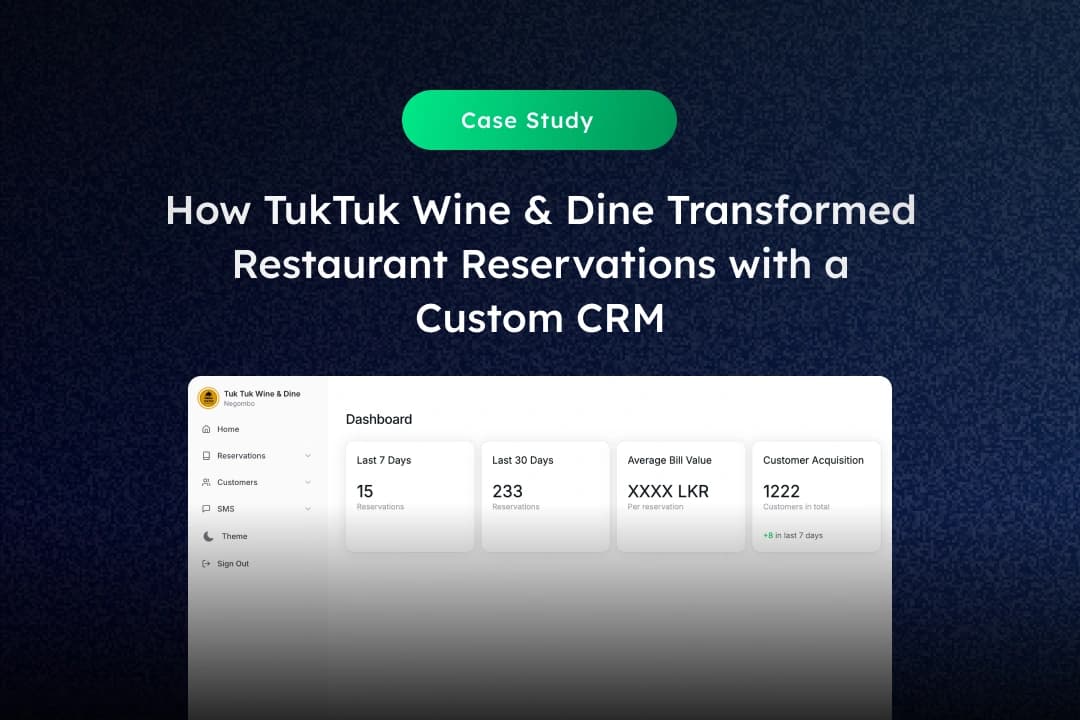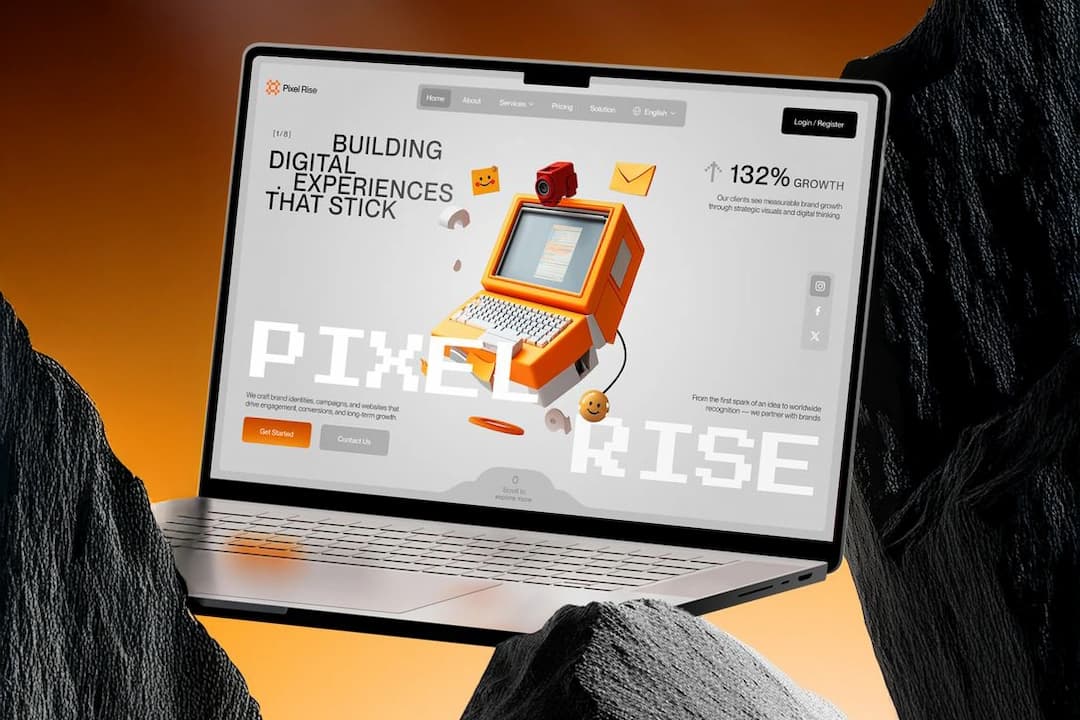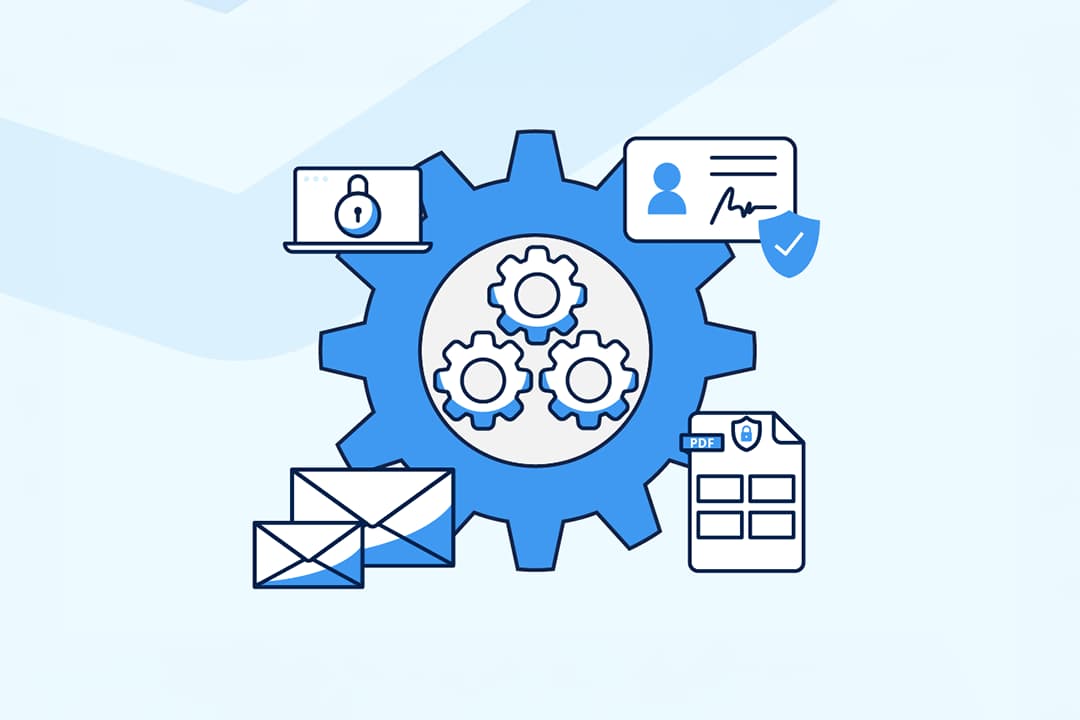
Introduction
Mobile applications have become the primary way customers interact with businesses, with 85% of Sri Lankan smartphone users preferring apps over mobile websites. As mobile usage continues to grow exponentially, businesses that invest in well-designed mobile apps gain significant competitive advantages. This comprehensive guide explores mobile app development strategies, technologies, and best practices specifically tailored for Sri Lankan businesses looking to engage customers through mobile devices.
The Mobile-First Reality in Sri Lanka
Mobile Usage Statistics
- Smartphone Penetration: 78% of Sri Lankan adults own smartphones
- Mobile Internet Usage: 92% of internet users access the web via mobile devices
- App Download Behavior: Average Sri Lankan user has 35 apps installed
- Time Spent on Mobile: 4.2 hours daily on mobile devices
- Mobile Commerce: 78% of online purchases made via mobile devices
Consumer Behavior Trends
- App Preference: Users spend 90% of mobile time in apps vs. 10% in browsers
- Local Content: 65% prefer apps with Sinhala/Tamil language support
- Offline Capability: 45% expect apps to work without internet connection
- Social Integration: 70% share app content on social media
- Push Notifications: 60% engage with push notifications from trusted brands
Types of Mobile Applications
1. Native Applications
Platform-Specific Development:
- iOS Apps: Built with Swift or Objective-C
- Android Apps: Built with Kotlin or Java
- Platform-Specific Features: Full access to device capabilities
- Performance: Optimized for each platform
- User Experience: Native look and feel
Advantages:
- Best performance and user experience
- Full access to device features
- Platform-specific design guidelines
- Better security and data protection
- Offline functionality
Disadvantages:
- Higher development costs
- Longer development time
- Separate codebases for each platform
- Platform-specific maintenance
- App store approval processes
2. Cross-Platform Applications
Hybrid Development Approaches:
React Native:
- Single codebase for iOS and Android
- Native performance with web technologies
- Large community and ecosystem
- Facebook/Meta backing
- Hot reloading for faster development
Flutter:
- Google's UI toolkit
- Single codebase with native performance
- Customizable widgets
- Growing popularity and community
- Excellent performance
Xamarin:
- Microsoft's cross-platform solution
- C# development language
- Native API access
- Enterprise-focused features
- Integration with Microsoft ecosystem
Advantages:
- Reduced development costs
- Faster time to market
- Single codebase maintenance
- Consistent user experience
- Easier team management
Disadvantages:
- Limited platform-specific features
- Performance compromises
- Larger app size
- Dependency on framework updates
- Platform-specific customization challenges
3. Progressive Web Apps (PWAs)
Web-Based Mobile Solutions:
- Built with web technologies (HTML, CSS, JavaScript)
- Installable on home screen
- Offline functionality
- Push notifications
- App-like experience
Advantages:
- No app store approval needed
- Automatic updates
- Smaller development cost
- Cross-platform compatibility
- Easy deployment
Disadvantages:
- Limited device feature access
- Performance limitations
- Platform inconsistencies
- Limited offline capabilities
- User adoption challenges
Mobile App Development Process
Phase 1: Planning and Strategy (Weeks 1-4)
Market Research:
- Target audience analysis
- Competitor app analysis
- Feature gap identification
- Market opportunity assessment
- User persona development
Technical Planning:
- Platform selection (iOS, Android, or both)
- Technology stack decisions
- Architecture planning
- Integration requirements
- Scalability considerations
Business Planning:
- Monetization strategy
- Marketing and launch plan
- Budget and timeline estimation
- Success metrics definition
- Risk assessment
Phase 2: Design and Prototyping (Weeks 5-8)
User Experience (UX) Design:
- User journey mapping
- Information architecture
- Wireframe creation
- User flow optimization
- Accessibility considerations
User Interface (UI) Design:
- Visual design system
- Platform-specific guidelines
- Responsive design principles
- Icon and asset creation
- Brand consistency
Prototyping:
- Interactive prototypes
- User testing preparation
- Stakeholder feedback collection
- Design iteration
- Final design approval
Phase 3: Development (Weeks 9-20)
Backend Development:
- API development
- Database design
- Server infrastructure
- Security implementation
- Third-party integrations
Frontend Development:
- UI implementation
- User interaction coding
- Performance optimization
- Testing integration
- Code quality assurance
Quality Assurance:
- Functional testing
- Performance testing
- Security testing
- Usability testing
- Device compatibility testing
Phase 4: Testing and Launch (Weeks 21-24)
Testing Phases:
- Alpha testing (internal)
- Beta testing (limited users)
- User acceptance testing
- Performance optimization
- Bug fixes and refinements
App Store Preparation:
- App store optimization (ASO)
- Metadata and descriptions
- Screenshots and videos
- Privacy policy and terms
- Compliance verification
Launch Strategy:
- Soft launch planning
- Marketing campaign execution
- User acquisition strategy
- Performance monitoring
- Feedback collection
Essential Features for Sri Lankan Mobile Apps
1. Multi-language Support
Language Implementation:
- Sinhala language support
- Tamil language support
- English as primary language
- Dynamic language switching
- Right-to-left text support
Localization Considerations:
- Cultural adaptation
- Local date and time formats
- Currency formatting (LKR)
- Regional preferences
- Local content integration
2. Offline Functionality
Offline Capabilities:
- Core feature availability
- Data synchronization
- Offline data storage
- Background sync
- Conflict resolution
Sri Lankan Context:
- Varying internet connectivity
- Data cost considerations
- Battery optimization
- Network-aware features
- Progressive loading
3. Payment Integration
Local Payment Methods:
- Credit/debit card processing
- Mobile wallet integration (FriMi, mCash)
- Bank transfer options
- Cash on delivery
- Buy now, pay later
Security Features:
- PCI DSS compliance
- Tokenization
- Biometric authentication
- Fraud detection
- Secure data transmission
4. Location-Based Features
GPS Integration:
- Location services
- Map integration
- Delivery tracking
- Store locator
- Geofencing
Sri Lankan Specific:
- Local map providers
- Address standardization
- Regional delivery zones
- Traffic-aware routing
- Local landmark integration
Technology Stack Selection
1. Frontend Technologies
Native Development:
- iOS: Swift, Objective-C, Xcode
- Android: Kotlin, Java, Android Studio
- Cross-platform: React Native, Flutter, Xamarin
Web Technologies:
- PWA: HTML5, CSS3, JavaScript
- Hybrid: Ionic, Cordova, PhoneGap
- Frameworks: Angular, Vue.js, React
2. Backend Technologies
Server Technologies:
- Node.js: JavaScript runtime
- Python: Django, Flask frameworks
- Java: Spring Boot, Enterprise solutions
- PHP: Laravel, Symfony frameworks
- C#: .NET Core, ASP.NET
Database Options:
- SQL: MySQL, PostgreSQL, SQL Server
- NoSQL: MongoDB, Firebase, CouchDB
- Cloud: AWS RDS, Google Cloud SQL
- Local: SQLite, Realm
3. Cloud Services
Infrastructure Providers:
- AWS: Comprehensive cloud services
- Google Cloud: AI/ML integration
- Microsoft Azure: Enterprise solutions
- Firebase: Real-time features
- Local Providers: Sri Lankan cloud services
User Experience Design for Mobile
1. Mobile-First Design Principles
Touch-Friendly Interface:
- Minimum 44px touch targets
- Gesture-based navigation
- Thumb-friendly layouts
- One-handed operation
- Accessibility compliance
Performance Optimization:
- Fast loading times
- Smooth animations
- Efficient memory usage
- Battery optimization
- Network efficiency
2. Sri Lankan User Preferences
Design Considerations:
- Cultural color preferences
- Local iconography
- Regional design patterns
- Accessibility features
- Low-bandwidth optimization
Content Strategy:
- Local language content
- Cultural relevance
- Regional customization
- Local news and updates
- Community features
App Store Optimization (ASO)
1. Keyword Strategy
Primary Keywords:
- App category keywords
- Feature-specific terms
- Local market keywords
- Competitor analysis
- Long-tail keywords
Sri Lankan Market:
- Sinhala keyword research
- Tamil keyword optimization
- Local search terms
- Regional variations
- Cultural keywords
2. Visual Assets
App Store Assets:
- Compelling app icon
- High-quality screenshots
- App preview videos
- Feature graphics
- Localized assets
Marketing Materials:
- Social media graphics
- Website integration
- Press kit materials
- User-generated content
- Influencer collaboration
Performance Optimization
1. Speed Optimization
Loading Performance:
- Image optimization
- Code minification
- Lazy loading
- Caching strategies
- CDN implementation
Runtime Performance:
- Memory management
- CPU optimization
- Battery efficiency
- Network optimization
- Background processing
2. User Experience Optimization
Smooth Interactions:
- 60fps animations
- Responsive touch feedback
- Loading states
- Error handling
- Offline indicators
Accessibility:
- Screen reader support
- Voice control
- High contrast mode
- Large text support
- Motor accessibility
Security and Privacy
1. Data Protection
Security Measures:
- Data encryption
- Secure authentication
- API security
- Local data protection
- Network security
Privacy Compliance:
- PDPA compliance
- Data minimization
- User consent management
- Privacy policy
- Data retention policies
2. App Security
Protection Features:
- Code obfuscation
- Anti-tampering
- Root/jailbreak detection
- Certificate pinning
- Runtime protection
Monetization Strategies
1. Revenue Models
Freemium Model:
- Free basic features
- Premium subscriptions
- In-app purchases
- Feature limitations
- Upgrade prompts
Advertising Model:
- Banner advertisements
- Interstitial ads
- Native advertising
- Video advertisements
- Sponsored content
E-commerce Integration:
- Product sales
- Service bookings
- Subscription services
- Digital products
- Marketplace fees
2. Sri Lankan Market Considerations
Payment Preferences:
- Local payment methods
- Mobile wallet integration
- Cash payment options
- Installment plans
- Regional pricing
Cultural Factors:
- Festival promotions
- Local partnerships
- Community features
- Social sharing
- Referral programs
Analytics and User Insights
1. Key Metrics
User Engagement:
- Daily/Monthly Active Users
- Session duration
- Retention rates
- Feature usage
- User journey analysis
Business Metrics:
- Conversion rates
- Revenue per user
- Customer lifetime value
- Churn rate
- App store ratings
2. Analytics Tools
Popular Solutions:
- Google Analytics
- Firebase Analytics
- Mixpanel
- Amplitude
- Local analytics providers
Custom Analytics:
- Business-specific metrics
- User behavior tracking
- Performance monitoring
- A/B testing
- Cohort analysis
Launch and Marketing Strategy
1. Pre-Launch Marketing
Building Anticipation:
- Teaser campaigns
- Beta user recruitment
- Influencer partnerships
- Social media presence
- Press coverage
App Store Preparation:
- ASO optimization
- Review generation
- Screenshot optimization
- Description writing
- Keyword research
2. Post-Launch Growth
User Acquisition:
- App store optimization
- Social media marketing
- Content marketing
- Influencer collaboration
- Paid advertising
Retention Strategies:
- Push notifications
- In-app messaging
- Loyalty programs
- Regular updates
- Community building
Maintenance and Updates
1. Ongoing Development
Regular Updates:
- Bug fixes
- Feature enhancements
- Performance improvements
- Security updates
- Platform compatibility
User Feedback:
- Review monitoring
- User surveys
- Support ticket analysis
- Feature requests
- Community feedback
2. Long-term Strategy
Scaling Considerations:
- User growth planning
- Feature roadmap
- Technology upgrades
- Platform expansion
- International growth
Cost Considerations
1. Development Costs
Initial Development:
- Design and UX: $5,000 - $15,000
- Development: $15,000 - $100,000+
- Testing and QA: $3,000 - $10,000
- App store submission: $100 - $300
Ongoing Costs:
- Maintenance: $2,000 - $10,000/month
- Updates and features: $5,000 - $25,000
- Marketing and promotion: $1,000 - $10,000/month
- Third-party services: $100 - $1,000/month
2. ROI Considerations
Revenue Potential:
- User acquisition costs
- Average revenue per user
- Customer lifetime value
- Market penetration
- Growth projections
Common Challenges and Solutions
1. Technical Challenges
Performance Issues:
- Solution: Performance profiling and optimization
- Solution: Efficient algorithms and data structures
- Solution: Caching and lazy loading
Platform Differences:
- Solution: Cross-platform frameworks
- Solution: Platform-specific optimizations
- Solution: Consistent testing across devices
2. Business Challenges
User Acquisition:
- Solution: Strong ASO strategy
- Solution: Social media marketing
- Solution: Influencer partnerships
Monetization:
- Solution: Multiple revenue streams
- Solution: User value optimization
- Solution: A/B testing different models
Future Trends in Mobile Development
1. Emerging Technologies
Artificial Intelligence:
- Machine learning integration
- Natural language processing
- Computer vision
- Predictive analytics
- Personalized experiences
Augmented Reality:
- AR shopping experiences
- Virtual try-ons
- Interactive content
- Location-based AR
- Social AR features
2. Platform Evolution
5G Technology:
- Faster data speeds
- Lower latency
- Enhanced streaming
- Real-time features
- IoT integration
Wearable Integration:
- Smartwatch apps
- Health monitoring
- Fitness tracking
- Notification management
- Quick actions
Conclusion
Mobile app development represents a crucial opportunity for Sri Lankan businesses to engage customers directly on their most personal devices. Success requires careful planning, user-centered design, and ongoing optimization based on user feedback and market trends.
Key success factors include:
- User-Centric Design: Understanding Sri Lankan user preferences and behaviors
- Technical Excellence: Building fast, secure, and reliable applications
- Local Market Adaptation: Supporting local languages, payment methods, and cultural preferences
- Performance Optimization: Ensuring smooth performance across different devices and network conditions
- Continuous Improvement: Regular updates and feature enhancements based on user feedback
The mobile app market in Sri Lanka is growing rapidly, and businesses that invest in well-designed, user-friendly applications will gain significant competitive advantages. With the right strategy, technology choices, and execution, mobile apps can become powerful tools for customer engagement, revenue generation, and business growth.
Ready to develop your mobile app? Contact us to discuss how we can help you create a successful mobile application that engages your Sri Lankan customers and drives business growth.



